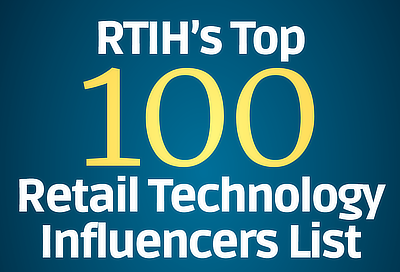Research
- September 28, 2020
The New Reality: Understanding the Retail Consumer Experience During a Pandemic -Wharton Study
The level of friction has increased in the retail shopping experience – regardless of how customers shop – and the impact is significantly greater. Certain problems have a disproportionate contribution to loyalty damage. Reducing friction during online shopping will be key to sustaining momentum and capitalizing on future online purchase intentions. As customers react to restrictions and establish new routines with respect to COVID-19, the perception of the effort made by retailers to protect their health and safety is key to loyalty.
- September 20, 2020
Multichannel Retail and COVID-19 - GlobalData
What the headlines fail to appreciate is that the pandemic is not dividing retail, it is bringing online and physical closer together with many retailers using both channels harmoniously. The reason the online channel failed to dominate is because customers’ needs are often best served by using multiple channels to make purchases. The best and strongest retail business models now reflect this: they present a seamless, channel-agnostic shopping experience for the consumer. - GlobalData
- September 14, 2020
Global Economic Forecasts: Q3 2020 -Euromonitor International
The 2020 global GDP growth baseline forecast has been downgraded by 1.5% compared to the May forecast, with a 1.2% downgrade for advanced economies and a 1.7% downgrade for developing economies. This mainly reflects the worse than expected economic effects of the pandemic in Western Europe, India and Latin America (which emerged during the summer as a new major centre of the pandemic). -from Euromonitor International
- September 07, 2020
Brand Intimacy Study 2020
Explore this year’s Top 10 Most Intimate brands. Demographics and global findings: Discover findings related to age, income, gender and geography. ROI: See how top intimate brands outperform the Fortune 500 and S&P for profit and revenue. Smartphone ecosystem: Learn more about how brands that embrace or enable consumers’ widespread use of smartphones are more intimate than those that don’t. Top industries across markets: See the top 3 most intimate industries across the U.S., Mexico and the UAE. -from MBLM
- August 31, 2020
Business Continuity And Recovery In The Age Of COVID-19: The Role Of Location Intelligence -RSR
This RSR report will seek to examine the impact of COVID-19, the most significant challenges retailers face while it rages on, the opportunities they see, and the technologies they can infuse with location intelligence to get the right answers to the questions posed above.
- August 24, 2020
The Future of Retail in Asia-Pacific: How to Thrive at High Speed - Bain & Company
In China and other parts of the region, retail is leapfrogging development stages that the US and Europe once toiled through. Instead of expanding physical store space to Western levels of saturation, executives are seeking urgent answers to cutting-edge e-commerce questions. The Future of Retail is on display in China. -from bain.com
- August 17, 2020
Disrupted Retail – How the Pandemic Exposed Retail’s Hidden Inventory Distortion
How big of a problem is inventory distortion for 2020 worldwide? Over $1.8 trillion, or the equivalent of 10.3% of same store sales in retail and hospitality. Or to put it another way, more than the annual GDP of Canada! That represents a tremendous amount of inefficiency in the market that can be addressed with IT solutions. -from ihlservices.com
- August 09, 2020
Mobile Wallet Adoption 2020 - Pymnts.com
Apple Pay was launched more than five years ago, prompting speculation that
mobile wallets would soon spell the demise of traditional credit cards. However, at this April 2020 research indicates, mobile wallets still struggle to gain traction. -from Pymnts.com
- August 03, 2020
Changing Shopping Habits and the New Customer Experience -RISnews
More than 50% of consumers report spending more on convenience to get what they need, with convenience increasingly being defined as contactless shopping, on-demand fulfillment and inventory availability. 70% will take advantage of buy-online-pickup-in-store (BOPIS) options if available. -from RISnews
- July 27, 2020
PwC Global Consumer Insights Survey 2020 - The Consumer Transformed
No one knows for sure just how many of the consumer behavioral changes accelerated by COVID-19 will gain permanent traction, but our recent consumer research is pointing to an increased desire among citizens for transparency, sustainability - from PwC
- July 20, 2020
USA National Retail Security Survey 2020 -NRF
The 2020 USA National Retail Security Survey finds shrink at an all-time high, accounting for 1.62% of a retailer’s bottom line — costing the industry $61.7 billion. It cuts deeply across the industry too, with seven in 10 reporting a shrink rate that exceeds 1%. -from NRF
- July 13, 2020
Top 100 Retailers 2020 -RISnews
wRatings examined more than 350 publicly traded global retailers. For this ranking, the retail market is the sum of the revenue for all the retailers examined, valued at $3.4 trillion, an increase of more than $123 billion. -from risnews.com
- July 06, 2020
The Shift to Digital - COVID-19 Impact on Consumer Spending - Mastercard Services
The COVID-19 outbreak has accelerated the digitization of how we work, live and shop. But, how will today’s habits shape how people shop in the long run? More money was spent online in the USA in April and May than the last 12 Cyber Mondays combined; in the month of May, USA e-commerce spending grew by 93% YOY. -from Mastercard Services
- June 29, 2020
Nine By Nine: 81 Brands Changing Our World -Future Commerce
Of the 287 brands we rated from our wealth of contributions in our Future Commerce Expert Network, we distilled it down to 81. A brand is a promise. The future is, after all, what we make of it. -from Future Commerce
- June 22, 2020
McKinsey COVID-19: Implications for business
McKinsey latest perspectives on the coronavirus outbreak, the twin threats to lives and livelihoods, and how organizations can prepare for the next normal.Page 13 of 34
















